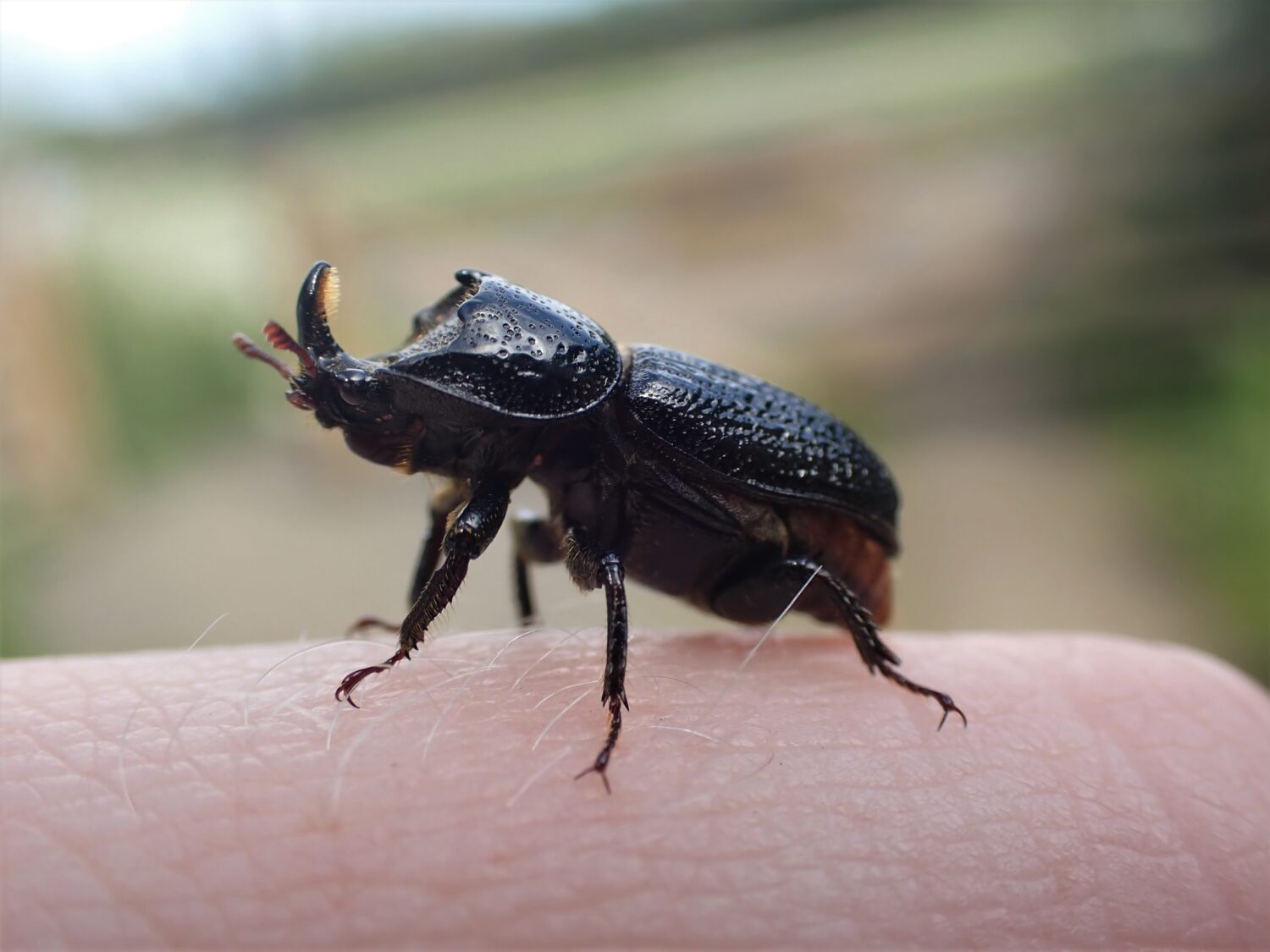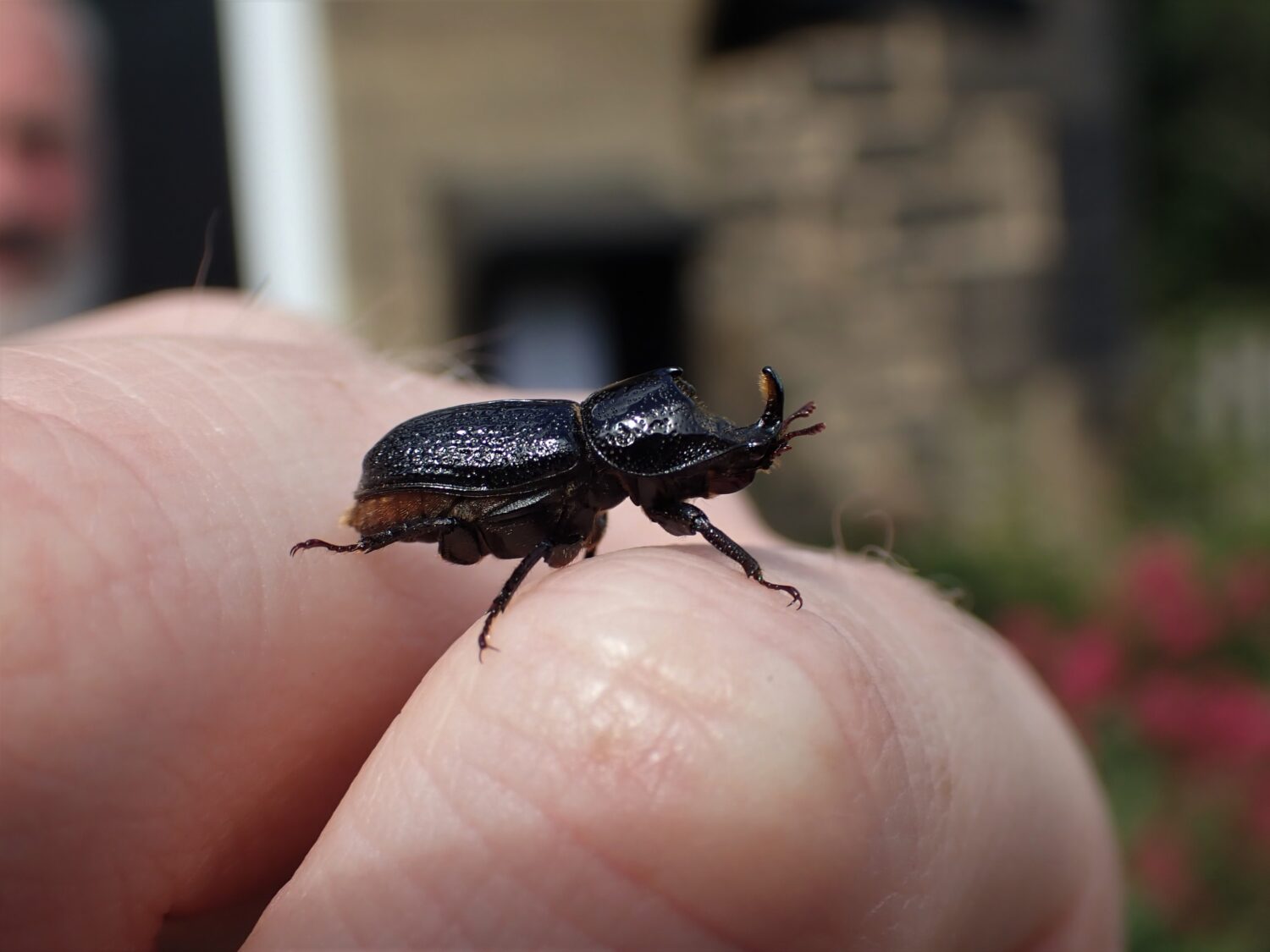(Sinodendron cylindricum)
Small but bold, the deadwood-loving Rhinoceros beetle depends on the reserve’s woodland to feed and breed.
Fast facts
- Common name(s)
- Rhinoceros Beetle
- Scientific name
- Sinodendron cylindricum
- Habitat
- Woodland
- Diet
- Decaying wood (larvae), tree sap (adults)
- When to see it
- June-October
Identification
Black and shiny beetles, males are easily identified by the rhino-like horn on their heads. At 2cm in length, this species is much smaller than its stag beetle relatives found here in the UK.
The larvae are unlikely to be seen, spending up to three years within dead wood before emerging as adults.
Did you know?
Gosforth Nature Reserve’s woodland is home to notable invertebrates associated with decaying and deadwood. These notable invertebrates form a vital part of the reserve’s Site of Special Scientific Interest (SSSI) status.

Ecology and behaviour
Depending on dead and decaying wood for at least part of its lifecycle, the Rhinoceros beetle is a species of saproxylic insect. Decaying wood is a larval food source whilst tree sap is used by the adults.
Adults are active in summer and are stronger fliers, though are most often found basking on tree trunks or logs.
To lay their eggs, females bury into rotting wood and excavate a network of tunnels. Meanwhile, males will guard and protect the entrance. Once the eggs hatch, larvae will feed on rotting wood within these tunnels and remain there for up to three years.
Rhinoceros beetle at Gosforth Nature Reserve
When walking through the woodland, this species can be found resting on tree trunks or logs. As this beetle depends on trees to feed and breed, the reserve’s woodland is essential for its survival. Woodland management ensures that deadwood is retained and that there is a continuity of deadwood, supporting populations of notable dead wood-associated invertebrates.
